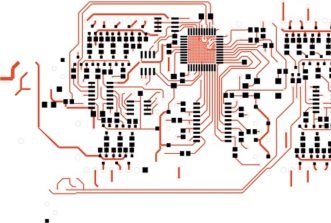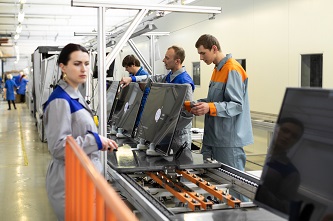This website uses cookies so that we can provide you with the best user experience possible. Cookie information is stored in your browser and performs functions such as recognising you when you return to our website and helping our team to understand which sections of the website you find most interesting and useful.
“Nvidia Unveils AI Power Supply with Innoscience GaN Technology”
Nvidia has revealed the power supply design for the Grace Blackwell GB300-NVL72 AI system, announcing the addition of Chinese power chip maker Innoscience to its list of suppliers. This move comes amidst controversy, as Innoscience is currently embroiled in a legal dispute with another supplier, Infineon Technologies, with whom Nvidia had previously collaborated on datacentre AI power delivery.
The Nvidia consortium is advocating for 800V power distribution to support AI applications, with plans to provide 1kW power for the next generation of GPUs. The power supply unit (PSU) for the GB300-NVL72 has been enhanced with energy storage capabilities to mitigate power spikes resulting from AI workloads, reducing peak grid demand by up to 30%. This design feature is crucial for alleviating strain on the power grid and will also be implemented in the GB200 NVL72 systems.
AI training involves the synchronous operation of thousands of GPUs, all executing the same computations on different datasets. This synchronization leads to power fluctuations at the grid level, unlike traditional data centre workloads where tasks are uncorrelated, smoothing out the load. The GPUs in AI workloads operate in lockstep, causing abrupt transitions between idle and high-power states, resulting in significant power draw variations.
To address these challenges, the GB300 PSU incorporates various mechanisms to manage power fluctuations during different operational phases. These mechanisms include power capping, energy storage, and GPU burn systems. The power cap restricts GPU power draw at the beginning of a workload, gradually increasing power levels in alignment with grid tolerance levels. A sophisticated strategy is employed for ramp-down scenarios, ensuring a smooth transition post-workload completion.
For rapid power fluctuations during steady-state operation, electrolytic capacitors have been integrated into the GB300 NVL72 power shelves. These capacitors charge during low GPU power demand periods and discharge during high demand phases. However, electrolytic capacitors are known for their unreliability in high-temperature environments. Additionally, a software algorithm is utilized to sense idle GPU power levels and engage the hardware power burner for ramp-down, optimizing power consumption.
Empirical results from testing the previous-generation GB200 and the latest GB300 power supply units with energy storage have demonstrated significant improvements in power consumption. The new design has successfully reduced peak power demand by 30% during training sessions, effectively dampening rapid power fluctuations. By integrating energy storage, the design not only smooths transients but also lowers peak demand requirements for the entire data centre, eliminating the need for facilities to be provisioned for maximum instantaneous power consumption.














